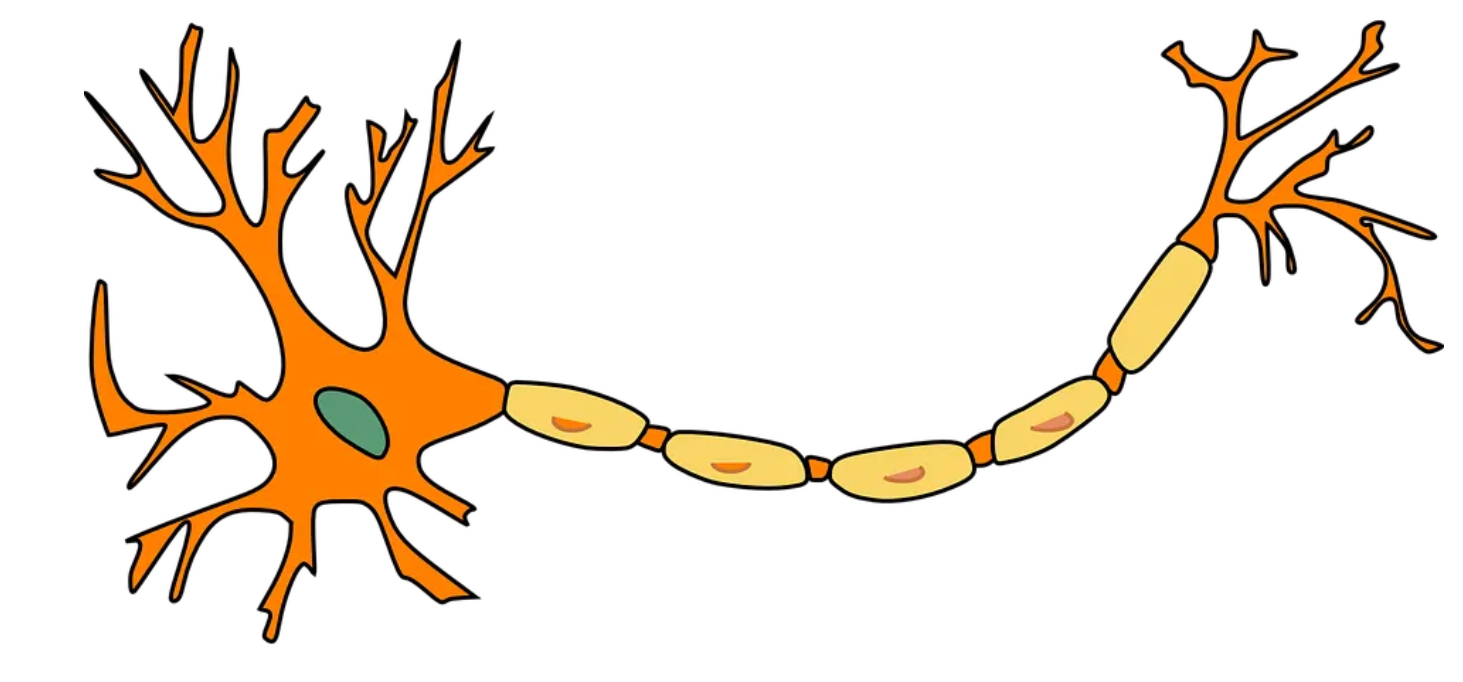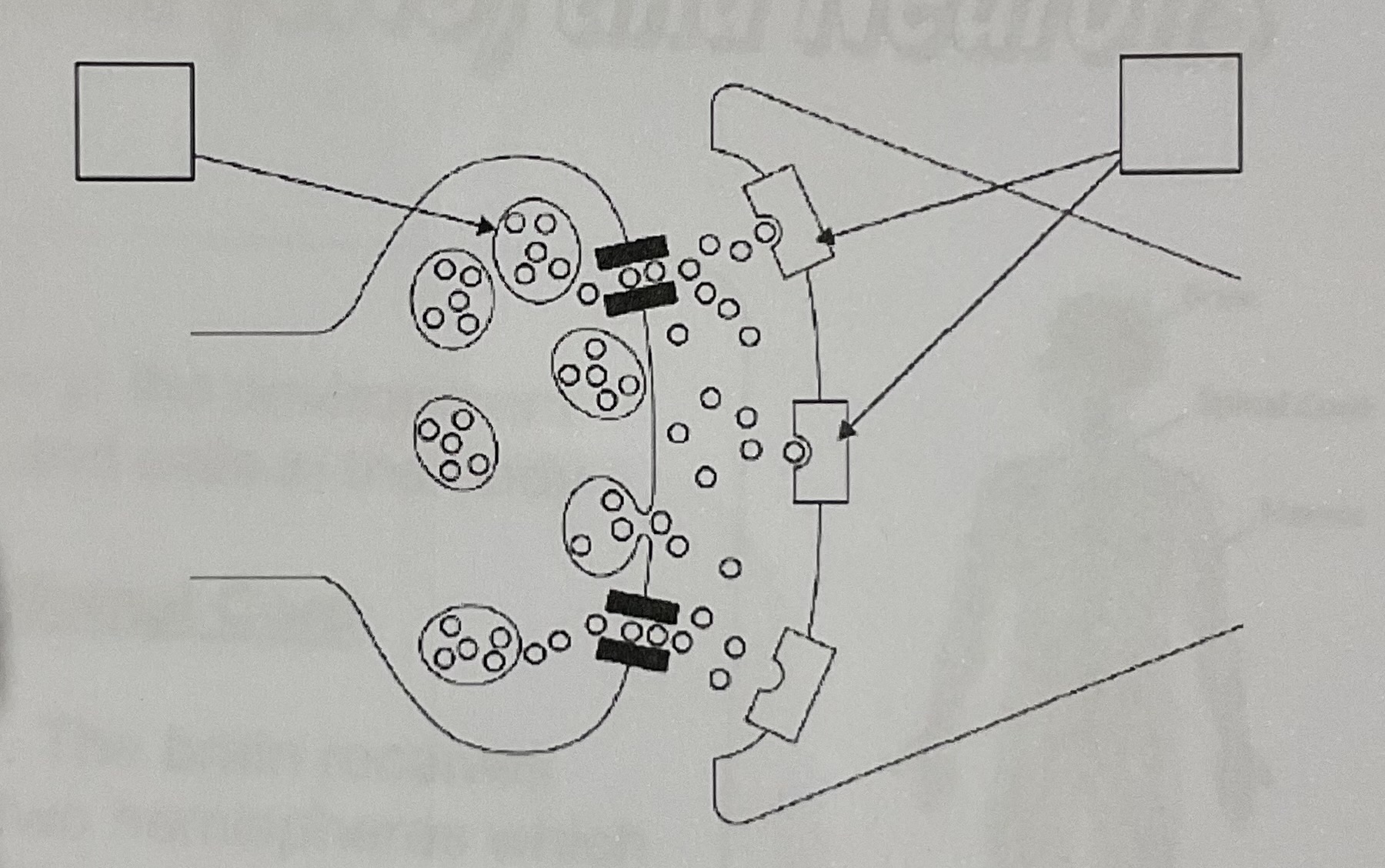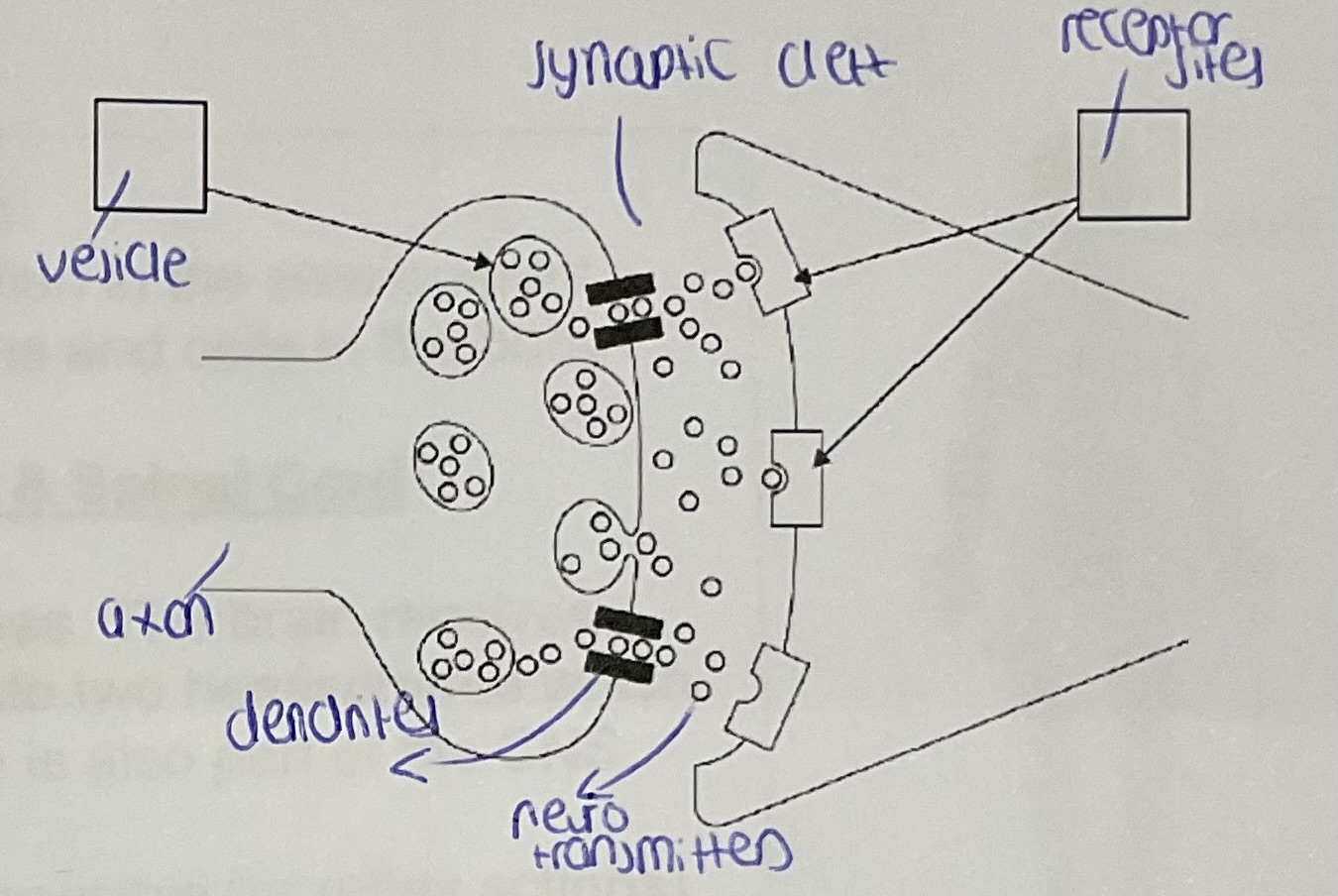The central nervous system and neurones
1/16
There's no tags or description
Looks like no tags are added yet.
Name | Mastery | Learn | Test | Matching | Spaced |
|---|
No study sessions yet.
17 Terms
What are the 2 main roles of the nervous system?
To collect, process and respond to information in the environment
To coordinate the working of different organs and cells in the body
What is the CNS made up of?
The brain and spinal cord
How does the CNS work?
The brain is the centre of all conscious awareness. The brain receives information from sensory receptors, it is divided into two hemispheres which are connected by the corpus callosum. This information travels to the spine (which is responsible for reflex actions) and passes info to the brain, linking with our peripheral nervous system. The spine is a tube-like bundle of nerve fibres connected to the brain via the brain stem.
What is the peripheral nervous system?
The PNS transmits messages to and from the CNS. It is divided into:
The automatic nervous system (ANS): governs vital ‘automatic’ functions, eg- breathing, heart rate
The somatic nervous system (SNS): controls muscle movement and receives information from sensory receptors

Label the neurone

Explain the neurone
The cell body of the neurone contains the cell nucleus, which houses genetic material (DNA) for that particular neurone. Attached to the cell body are dendrites that receive messages from other neurones in order to trigger action potential (electrical impulses) within the cell. Also attached to the cell body is the axon, an extension of the cell body that passes the electrical impulses towards the axon terminals. Around the axon are layers of myelin sheath formed by Schwann cells that provide an insulating layer to the axon and help to speed up the rate of message transmission. There are breaks between the cells along the myelin sheath, which are known as nodes of Ranvier. At the very end of the axon are axon terminals, and at the ends of these are terminal buttons. These contain tiny sacs called vesicles that store neurotransmitters (chemicals that cross along a synapse).
What are sensory neurones?
Neurones that carry messages from sensory receptors in the PNS to the CNS. They have long dendrites and a short axon.
What are motor neurones?
Neurones that carry messages from the CNS to the PNS to effectors in the body. They have short dendrites and a long axon.
What are relay neurones?
Neurones that connect sensory neurons and motor neurons together, They are only found in the CNS. They have a long axon and short dendrites.
What do excitatory neurotransmitters do to the neurone?
They cause the neurone to become less negative, increasing the likelihood of an action potential firing (eg- dopamine)
What do inhibitory neurotransmitters do to the neurone?
They cause the neurone to become more negative, decreasing the likelihood of an action potential firing (eg- serotonin)

Label the synapse

What is action potential?
The method by which the electrical impulses pass down the axon of the neurone to stimulate the release of neurotransmitters (chemical messengers) to another neurone. It is response of the postsynaptic neurone if ‘threshold’ is reached. This sends an electrical impulse down the axon of the neurone.
What is synaptic transmission?
The process by which neurones communicate with eachother. This occurs by sending chemical messages, in the form of neurotransmitters, across the synaptic cleft that separates them.
What is the presynaptic neurone? (in relation to synaptic transmission)
The neurone where the signal is initiated
What is the postsynaptic neurone? (in relation to synaptic transmission)
The neurone which receives the signal
How does synaptic transmission work?
When the action potential reaches the presynaptic terminal (the end of the neurone), it causes the vesicles to fuse with the presynaptic membrane and release their contents into the synaptic cleft as neurotransmitters. Once the neurotransmitters are in the synaptic cleft, they diffuse across it and bind to the receptors on the postsynaptic neurone. Specific neurotransmitters can only fit into specific receptors on this postsynaptic neurone. The chemical signal is converted back into an electrical signal in the postsynaptic neurone, which will fire another action potential. Any neurotransmitter molecules that are not absorbed by the receptors of the postsynaptic neurone will be destroyed by enzymes in the synaptic gap or reabsorbed into the presynaptic neurone via an uptake pump.